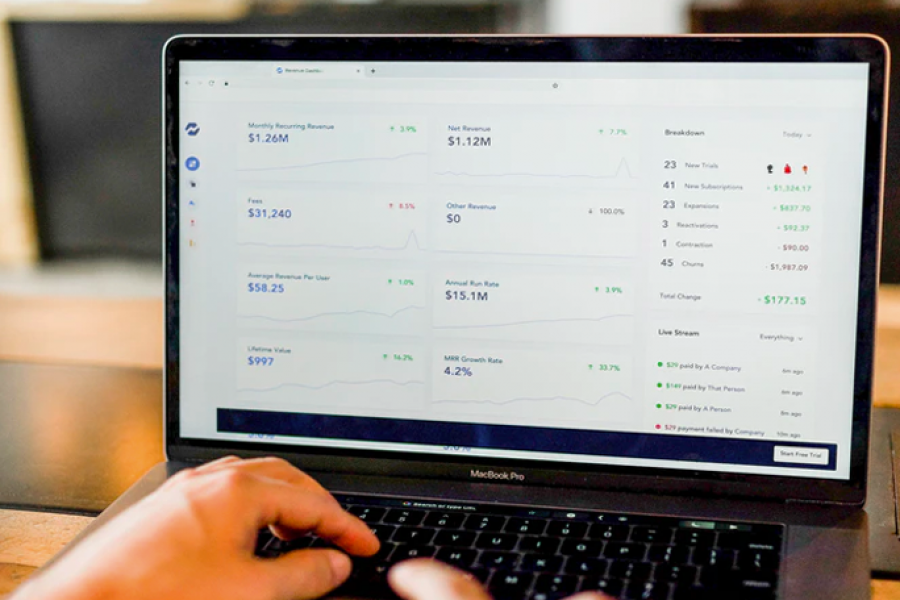August 17, 2021 – 7 minute read
Getting Started with Search Engine Optimization (SEO) for eCommerce
Digital Marketing, SEO, Thought Leadership

Whether you’re just getting started online or the owner of multiple sites, search engine optimization (SEO) matters. Following SEO best practices positively impacts your performance in organic search results which helps more users discover your content.
What exactly does SEO mean? SEO is all about helping search engines better understand and present content. No matter the size or content you offer on your site, you can take steps to improve your SEO. Start by making small modifications to parts of your website that will make it easier for search engines to crawl, index, and understand your content. In turn, this can drive more website traffic and elevate your organic search result positioning.
Over 50% of all website traffic is brought in by organic search. The higher your site is positioned in organic search results, the more clicks and more sales you’ll receive. While following best practices can’t guarantee that your site will automatically rank first across search engine results, making these improvements can lead to impactful results in improving your performance in organic search results and lead to an improved user experience.
For Every eCommerce Business, Here are 5 Key SEO Tips you Should Start to Implement for your Site:
1. USE BUYER FRIENDLY LANGUAGE & WELL ORGANIZED, READABLE COPY
Not only do people gravitate toward descriptive and helpful content, but Google also rewards it. Better content drives more clicks, which improves search results positioning and in turn drives even more clicks.
Good content is key. Simply trying to jam pack keywords in a way that doesn’t make sense won’t help you effectively improve your organic rankings. Engaging and valuable content that aims to help users or solve problems they’re looking for does. When you write content for buyers and not search engines, you’ll also build more trust with your audience and as a bonus, improve the user experience.
2. KEEP URLS SHORT AND IN PLAIN LANGUAGE
Make URLs easy to read for both humans and Google crawlers. People are more likely to trust (and click on) short links they can read and understand. Overly complex URLs with large strings of letters and numbers can create problems when indexing every page.
If users can’t understand or read your URL, search engines can be just as confused. Don’t included long tailed URLs with unexplained numbers and characters that don’t tell users anything about what they can expect from your content. URLs that are well-structured and organized are more favored by search engines too.
3. INCLUDE A CANONICAL TAG TO PRIORITIZE DUPLICATE CONTENT
In eCommerce, it’s common to have similar content & descriptions across similar products. Using the “rel=canonical” tag tells Google which page it should crawl most often and points to the page that should show up most often in search results.
By telling search engines which page takes priority, you can avoid potential conflicts with identical content appearing on multiple URLs. When there is too much duplicate content, search crawlers may pick up a different page that the one you want to prioritize, miss some of your unique content, or even dilute your search ranking.
4. UTILIZE 301 REDIRECTS TO KEEP BENEFITS OF DISCONTINUED ITEMS
Discontinued items shouldn’t mean less traffic. Redirect users who are looking for these items to other replacement/relevant products. This gives you the opportunity to retain the sale and keep SEO benefits from these old items on your site.
Not only can this help you preserve traffic and search result page rankings built from these pages but also provide direction and helpful content to users rather than just leaving them at a dead-end to immediately exit the page. Having 301 redirects in place helps keep visitors engaged with your site and can direct them to similar or better content that could still turn them into a customer.
5. TRACK AND MONITOR PERFORMANCE FOR CONTINUOUS IMPROVEMENT
The work doesn’t stop the moment the site launches. Use reporting tools to make data driven decisions for on-site optimization and continue to maximize your SEO potential.
SEO is an ongoing process and not a one-time action. Search engines continue to evolve with time and improve their algorithms as search rankings fluctuate and your competition steps up their game. Understanding market demands and continuously monitoring trends alongside any content that may become outdated is also important when considering your SEO strategy.
Overall, search engine optimization is all about making your site better for search engines. While social media, paid ads, and referrals are all capable of generating traffic to your website, organic search accounts for the biggest share. Taking the time to optimize your site will improve your rankings on search result pages and drive more engagement through increased clicks, reads, shares, and purchases.
